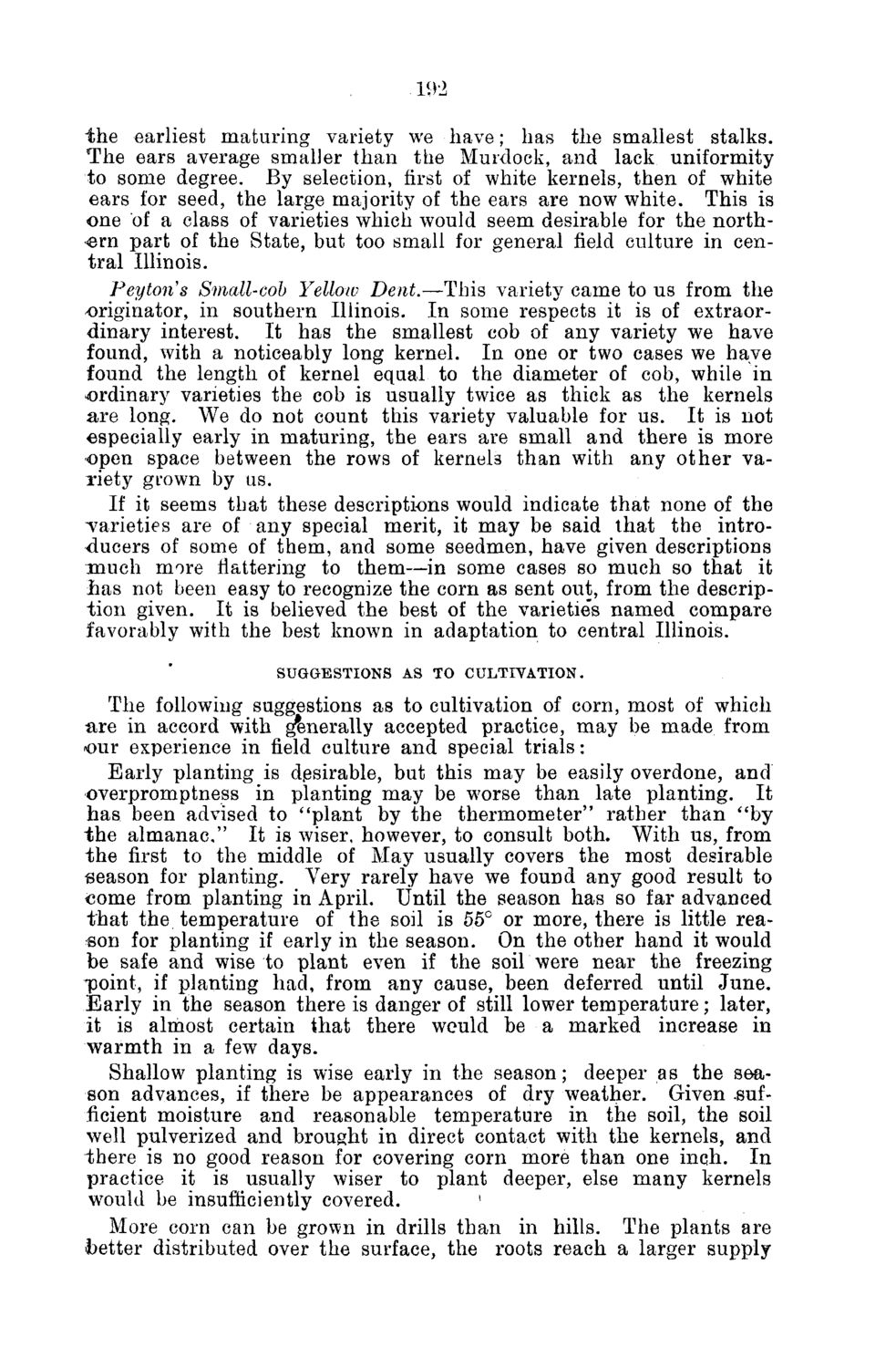| |
| |
Caption: Board of Trustees Minutes - 1886
This is a reduced-resolution page image for fast online browsing.

EXTRACTED TEXT FROM PAGE:
192 the earliest maturing variety we have; has the smallest stalks. The ears average smaller than the Murdock, and lack uniformity to some degree. By selection, first of white kernels, then of white ears for seed, the large majority of the ears are now white. This is one of a class of varieties which would seem desirable for the northern part of the State, but too small for general field culture in central Illinois. Peyton s Small-cob Yelloiv Dent.—This variety came to us from the originator, in southern Illinois. In some respects it is of extraordinary interest. It has the smallest cob of any variety we have found, with a noticeably long kernel. In one or two cases we have found the length of kernel equal to the diameter of cob, while in ordinary varieties the cob is usually twice as thick as the kernels are long. We do not count this variety valuable for us. It is not especially early in maturing, the ears are small and there is more open space between the rows of kernels than with any other variety grown by us. If it seems that these descriptions would indicate that none of the Tarieties are of any special merit, it may be said that the introducers of some of them, and some seedmen, have given descriptions much more flattering to them—in some cases so much so that it has not been easy to recognize the corn as sent out, from the description given. It is believed the best of the varieties named compare favorably with the best known in adaptation to central Illinois. SUGGESTIONS AS TO CULTIVATION. The following suggestions as to cultivation of corn, most of which are in accord with ^nerally accepted practice, may be made from our experience in field culture and special trials: Early planting is desirable, but this may be easily overdone, and overpromptness in planting may be worse than late planting. It has been advised to "plant by the thermometer'' rather than "by the almanac," It is wiser, however, to consult both. With us, from the first to the middle of May usually covers the most desirable season for planting. Very rarely have we found any good result to <3ome from planting in April. Until the season has so far advanced that the temperature of the soil is 55° or more, there is little reason for planting if early in the season. On the other hand it would be safe and wise to plant even if the soil were near the freezing T3oint, if planting had, from any cause, been deferred until June. Early in the season there is danger of still lower temperature; later, it is almost certain that there would be a marked increase in warmth in a few days. Shallow planting is wise early in the season; deeper as the season advances, if there be appearances of dry weather. Given .sufficient moisture and reasonable temperature in the soil, the soil well pulverized and brought in direct contact with the kernels, and ihere is no good reason for covering corn more than one inch. In practice it is usually wiser to plant deeper, else many kernels would be insufficiently covered. » More corn can be grown in drills than in hills. The plants are foetter distributed over the surface, the roots reach a larger supply
| |